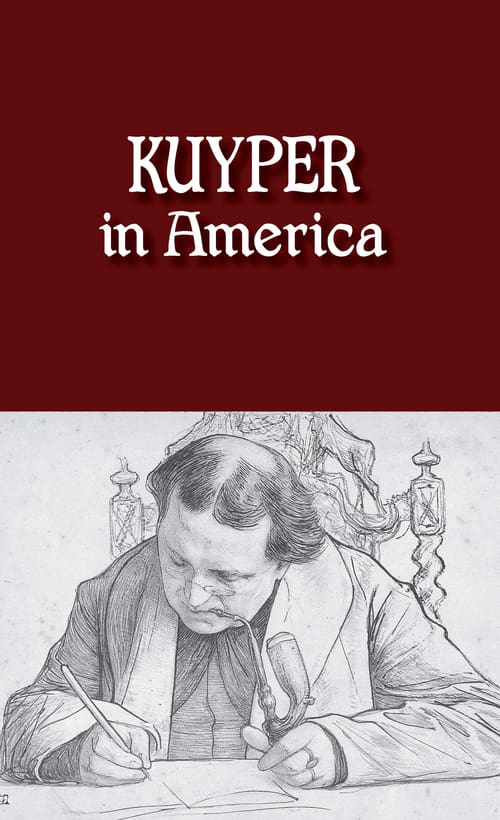The Challenges of Cultural Discipleship: Essays in the Line of Abraham Kuyper by Richard J. Mouw. Eerdmans, 2011. 246pp.
Kuyper in America, by George Harinck (ed.). Dordt College Press, 2012. 100pp.
What’s a nice Baptist girl like me doing with the likes of Abraham Kuyper? I confess, this question choreographed itself (Baptists don’t dance, so I suppose our thoughts mustn’t either) through my mind more than once when I picked up two recently published volumes: Richard Mouw’s book, The Challenges of Cultural Discipleship: Essays in the Line of Abraham Kuyper and Kuyper in America, a newly translated edition of twenty-two letters written by Kuyper to his wife and children during his 1898 visit to America, edited by George Harinck.
We Baptists know the Bible, the Sinner’s Prayer, Romans Road, the Pledge of Allegiance (if you are American), and, maybe, the Four Spiritual Laws. But sphere sovereignty? Kuyperianism? Neo-Calvinism? It’s all Dutch to me.
Yet, delving into Kuyperian theology was not unlike déjà vu: I found that I had encountered these ideas before, though, admittedly, I had not known whence they came. But when I did discover these ideas, they were, in a non-Baptist way of speaking, salvific—in the sense of the second salvation, which redeems, in Kuyperian terms, “the rest of life,” the one here on earth, for which Kuyper found the Christian faith just as pertinent as that first kind of salvation.
Being raised in the Baptist church meant, for me, as is de rigueur, accepting Jesus into my heart—thereby possessing the blessed assurance that I will go to heaven when I die—then twiddling my thumbs from here to eternity. Unless, of course, I wanted to be a missionary or pastor’s wife—which I didn’t. I’m sure these latter points weren’t preached quite exactly in those words from behind the wooden pulpits in the churches of my youth, but neither was the contrary proclaimed, at least not to my hearing.
So, although I had accepted Jesus into my heart by the time I was five years old, it wasn’t until many years later, when I encountered Kuyperian thinking (not knowing it then to be such), that I came to understand that Christ belongs in places outside of my heart, too—indeed, in all places. So, like Mouw, who describes a similar reckoning elsewhere on this site, I had my most dramatic spiritual awakening in being introduced to Christian worldview thinking.
When I did, it was by way of World magazine, which characterizes its oeuvre as in the Kuyperian line, explaining in its media guide, “The world that WORLD seeks journalistically to cover is the same world about which Christ says, ‘Mine.’ It all belongs to Him, and that acknowledgment is what makes a uniquely Christian approach to journalism so compelling.” Witnessing the application of Kuyperian thinking in so many areas by way of this journalistic approach quickened what had been for so long a steady but quiescent faith. My thinking began to take root in what Mouw calls in the book the “insistence that the redemption accomplished by Christ is not only about the salvation of individuals—it is the reclaiming of the whole creation.”
Yet, until picking up these two books for some less-than-leisurely summer reading, I didn’t know to whom I owed thanks for the transformative experience. Although for some years I have been teaching in all of my literature classes at Liberty University the error of compartmentalization in the false categories of “secular” and “sacred,” I did not know that it was Kuyper who proclaimed, so famously, “Oh, no single piece of our mental world is to be hermetically sealed off from the rest, and there is not a square inch in the whole domain of our human existence over which Christ, who is Sovereign over all, does not cry: ‘Mine!'” These two books—part of a vast body of Kuyperian studies, to be sure—reveal and examine the riches of both theology and practice that inevitably emerge from such an incisive and sound proclamation.
While I might suggest that neither Mouw’s collection of essays—the scholarly background to his many popular works on the Kuyperian perspective—nor Kuyper’s collection of letters is the best candidate for an introduction to the man and his work, crash courses, even dizzying ones, have their pleasures—and their benefits—to be sure.
For one thing, Mouw’s book is in itself an apt embodiment of the instructive “semper reformanda” refrain. Just as Kuyper, as Mouw explains in the book’s introduction, “saw the need for a ‘neo-Calvinism,’ a reworking of key concepts in John Calvin’s system of thought for new challenges and concepts,” so this collection of essays offers a reexamination and reworking of Kuyperian thought for this century.
Yet, the essentials of Kuyper, the essays demonstrate, still stand. Within the North American context, Mouw explains, these core points can be boiled down to “an appreciation for the ‘not-one-square-inch’ manifesto regarding the kingship of Jesus, a broad acceptance of the idea of sphere sovereignty, and a commitment to the integration of faith and learning.” Mouw’s examination of these essentials—fleshed out and applied with varying levels of specificity within the thirteen essays which cover topics including public theology, education, and baptism, as well as more esoteric intra-reformed issues—reveal just how great an influence Kuyper has wielded, even among those of us caught unaware. The reading leaves me with awe and gratitude in the recognition that even my own quintessentially Baptist and evangelical educational institution would not be what it is without Kuyper and his fellows. After all, our university catalog promises in its “Statement on Worldview” that students will “receive an education that integrates [a] Christian and biblical worldview,” and the institution increasingly equips, expects, and holds accountable faculty for doing just that—even more noteworthy considering that the memory of a time when “Christian education” was understood there and elsewhere to consist of opening class in prayer has not quite faded into the past.
Thus I found most resonant with my own developing spiritual and intellectual maturity Mouw’s chapter on creational politics, a section of the book that examines the command of Genesis 1:28 to “fill the earth” as a cultural mandate. Had I had this understanding as a Christian college student deciding to pursue an education in the liberal arts (and ultimately an academic career therein), I would not have made that choice thinking, wrongly, that I could do so only out of some level of rebellion against God, at worst, or as some sort of lesser citizen of his kingdom, at best. Such thinking, I know now, is pietism gone greatly awry.
I had yet to grasp one of the central concepts holding personal piety in healthy balance: “common grace,” defined by Mouw in the text as “a nonsalvific attitude of divine favor that allows for the nonelect [or unredeemed] to contribute to the positive formation of culture.” It is common grace that permits the works of even—especially, as it too often seems—unbelievers to perceive and express truth, goodness, and beauty, whether through works of art, architecture, music, or literature. This understanding of common grace frees even Baptists like me from having to apologize for loving truth, as Augustine puts it, wherever it might be found.
And yet even truth, goodness, and beauty—as splendid as they are—are not ends in themselves, in Kuyperian thinking. Rather, Kuyper’s notion of sphere sovereignty puts even these goods into the service of an even greater good: manifesting the kingdom of God and the “absolute supremacy of God in all things,” in the words of Geerhardus Vos.
Less savoury than truth, goodness, and beauty is politics, and perhaps nothing is more striking in Kuyper than the balance he achieves in both the breadth and depth of his application of his thought from the sublime to the quotidian, a range clearly reflected in both Mouw’s essays and in Kuyper’s own letters.
The twenty-two letters contained in Kuyper in America were written on the occasion of Kuyper’s journey to America in order to deliver the Stone Lectures at Princeton University. They serve to endear a great figure in church history to the reader; the text’s accompanying notes, photographs, and reproductions provide contexts helpful to readers of all levels of familiarity with the subject.
The letters flesh out the man in sometimes surprising ways. Amidst the gender debates raging today, the recurring, positive attention Kuyper gives in his letters to the character and conversation of the women he encounters in his sojourn is striking. It’s interesting, too, how certain things never change: “A curse in this country,” Kuyper wrote to his family on October 1, 1898, “are the sects. They shoot up like mushrooms.” The letters are rife with expressions of longing for communication from home and anticipation of return. Even amidst taxing travels, the delivery of historical lectures, banquets held in his honor, a visit to the American President, continuing bouts of poor health, the sphere closest to Kuyper’s heart and mind was his family.
Though the observation might strike some as sacrilegious, it occurs to me after reading these two volumes that the differences between this towering theologian and statesman of the most elite European standing and a certain Baptist preacher from the rural American south named Jerry Falwell are vastly overcome by their common causes and accomplishments in education, politics, and family life.
What hath Baptists to do with Kuyper? For this Baptist, as it turns out, every square inch.



